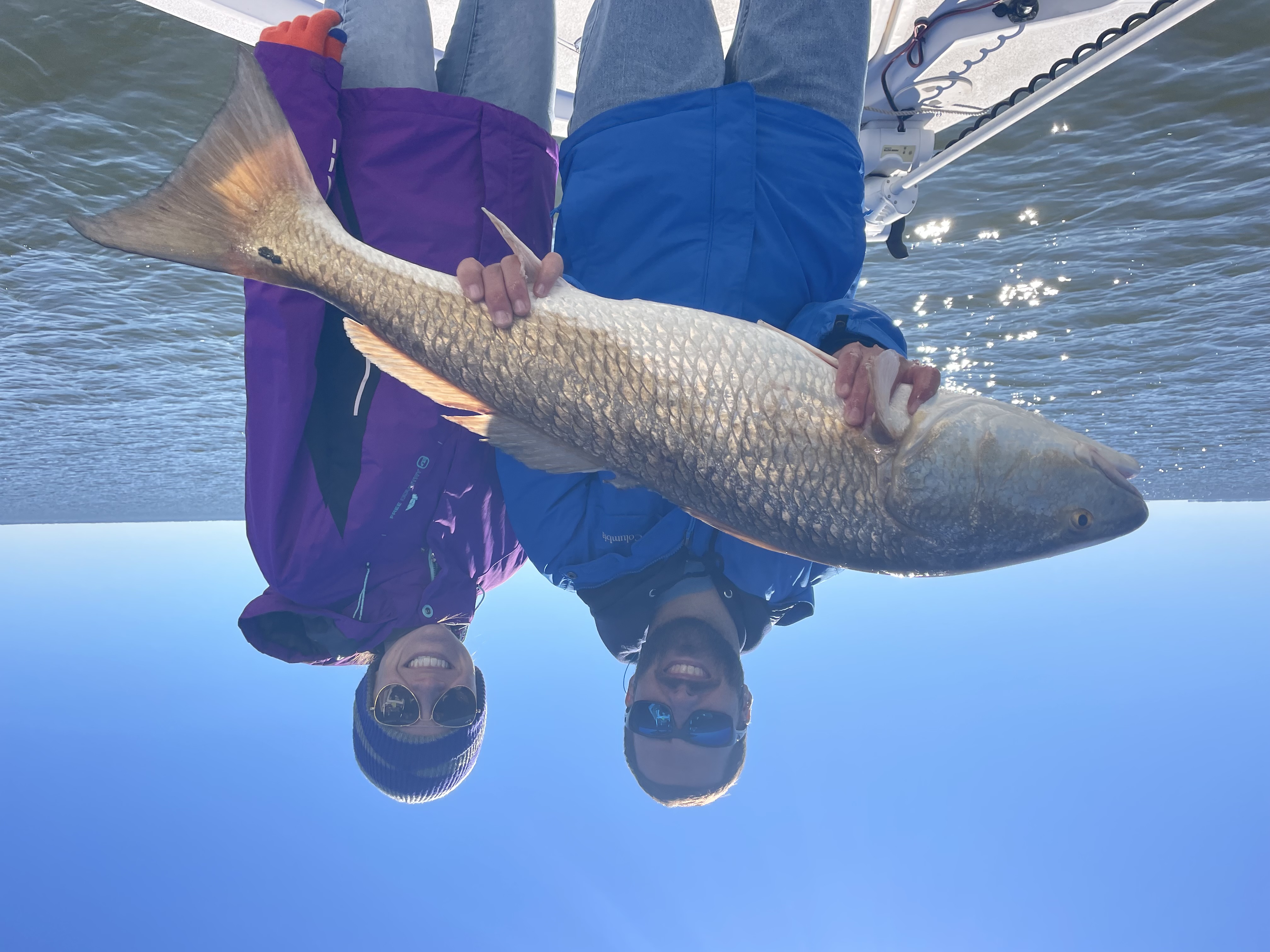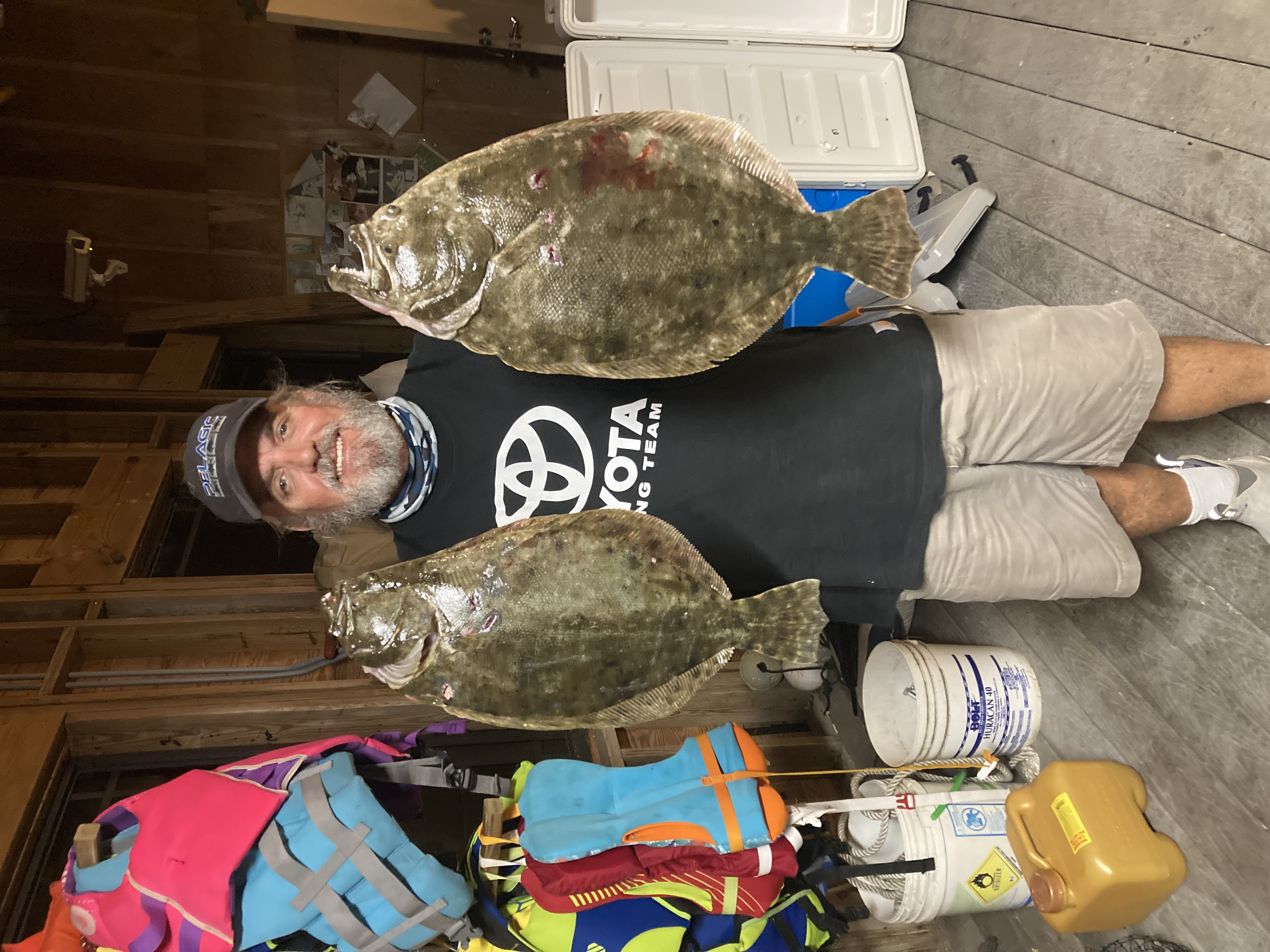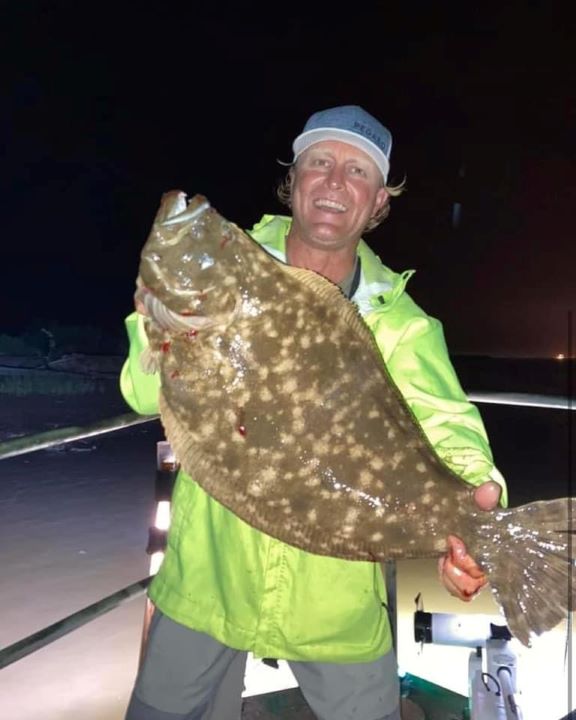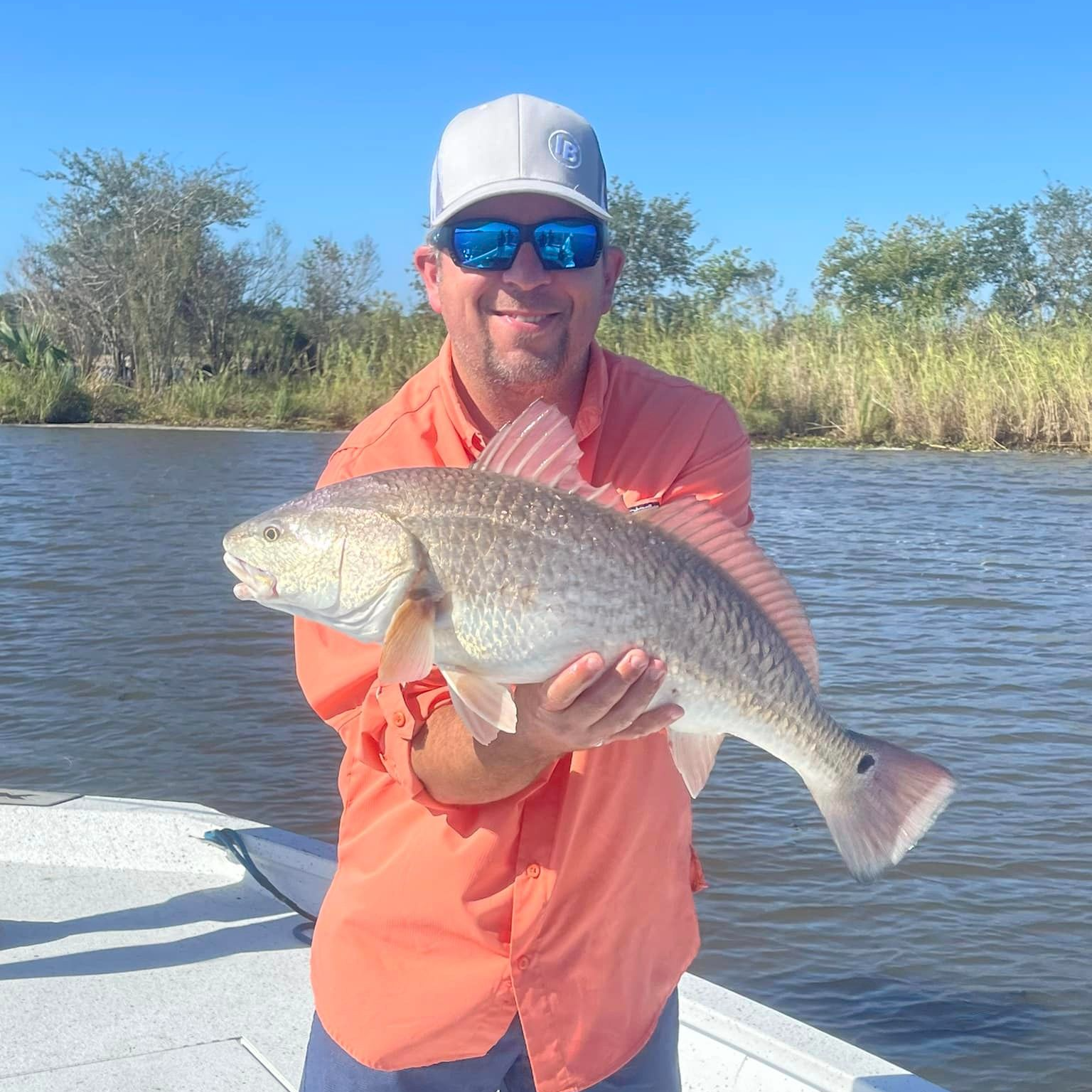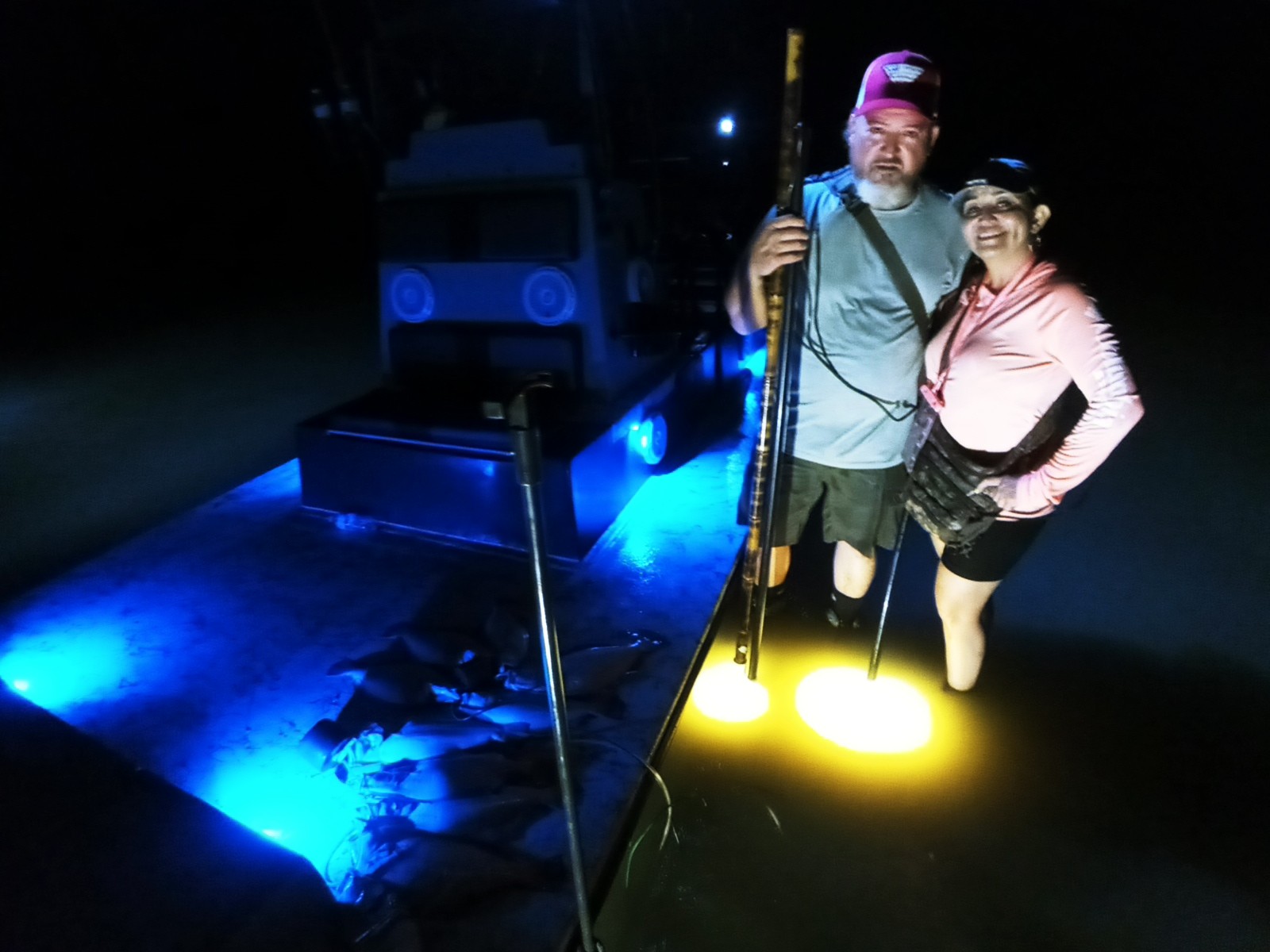Inshore Fishing in Mount Pleasant
Gigging Trip
Inshore, Flats Fishing in Elberta
Night Saltwater Bowfishing
Inshore, River, Flats in Apalachicola
Half Day Fishing Apalachicola
Inshore, Flats Fishing in Jensen Beach
Night Fish / Flounder Gigg
Inshore, Flats Fishing in Port O'Connor
POC Flounder Gigging Trips
Inshore Fishing in Surfside Beach
Flounder Gigging
Inshore, River, Flats in Lafitte
Afternoon Big Group Excursion
Inshore, Flats Fishing in Lafitte
Overnight Bayou Adventure
Inshore, Flats Fishing in Aransas Pass
Coastal Bend Flounder Gig
Inshore, Flats Fishing in Rio Hondo
Flounder Gigging Trip
We started Captain Experiences to make it easy to book fishing and hunting guides around the world. With over 2,000 Damn Good Guides, our platform makes finding and booking a trip seamless. Head here to check out our trips.
What is Flounder Gigging?
Flounder gigging is a method of fishing that involves hunting for flounder at night using a long spear or flounder gig. Typically gigging for flounder is done at night using a light to illuminate the bottom and spot the flounder, which are known to hide in the sand or mud. Once a flounder is spotted, the fisherman will use the gig to spear or stab the fish, either by hand or with a pole.

Flounder gigging is a popular sport in coastal areas, particularly in the southern United States along the Gulf Coast from Texas to Florida. Gigging for flounder is also popular in areas of the Carolinas. Gigging requires skill, patience, and a keen eye, as the fish are often difficult to spot and can be elusive. It is also a relatively sustainable fishing method, as it typically targets only flounder and does not involve the use of nets or other indiscriminate gear that can harm other marine life.
How Do You Gig For Flounder?
There are a couple of different ways to gig for Flounder, by boat or by wading. Choosing the type of fishing you want to do is purely based on how accessible the fishing destination is and personal preference.
From A Boat
Since Flounder are typically in shallower water, you’ll need a flat-bottomed boat for the most success when navigating prime gigging areas. Typically, Flounder gigging boats are equipped with gigging lights to illuminate the areas surrounding the boat, making gigging easier. Most gigging boats are also equipped with air (or fan) motors, but some can get by with trolling motors. Air motors are notoriously loud, so if you’re looking for a quieter night while out hunting, a trolling motor is your best bet.
Wading
Wading is a popular way to hunt for Flounder and many swear by the technique as it provides more control versus a boat. When wading you’ll just need your lighting source of choice, a Flounder gig and good wading boots or close-toed shoes. Certain areas are easier to access via wading but the main downside is the inability to cover as much ground as you would if you were on a boat.
Where Can You Find Flounder?

Flounder are found in coastal waters around the world, typically in shallow areas such as bays, estuaries, and tidal flats. They are bottom-dwelling fish that are well-camouflaged to blend in with the sandy or muddy bottoms they inhabit. To fish for flounder
What gear do I need for gigging Flounder?
If you’re ready to try your hand at gigging, you’ll need the following items and gear for a successful night out on the water.

1. Flounder Gig
A Flounder gig is a trident-like tool used to stab or gig the Flounder. The barbed spears are attached to a long pole. Gigs made from 316 or 17-4 stainless steel are best due to their corrosion-resistance, but you can also get lower quality gigs made from carbon or 304/308 stainless steel, which can corrode over time.
2. Flounder Gigging Lights

Flounder gigging trips typically occur in the dark at night, so having proper lighting to help you identify a Flounder underwater is important. If you’re gigging from a boat, you’ll likely have bright LED lights mounted above to shine into the water, helping you find flounders.
If you’re wading, you’ll want to attach a light to your pole or use a bright headlamp.
The best light is one that offers enough brightness to penetrate through the water, but light and compact enough to be carried along for the journey. It’s also best to always have a backup light in case your initial one loses charge and you need to navigate through the dark water.
3. Proper Clothing & Footwear
Before heading out on the water, make sure that you’re wearing the appropriate gear. Your setup will depend on whether you’re wading or boat-bound. Your clothing will also depend heavily on the wind and temperature, so pay attention to the forecast before heading out. If wading, remember to wear closed-toed shoes with hard bottoms to reduce your chances of injury. Wading boots are your best choice, but most close-toed shoes will provide value when walking in the shallow water. Additionally, when heading through deeper wading areas, remember to shuffle to reduce potential injury in case of stingray encounters.
Flounder Gigging Season
Flounder gigging season is typically from August to November, but some local areas allow gigging outside of that window. If you’re looking to go Flounder gigging in a specific area, make sure to check local laws and regulations before venturing out. In colder weather, Flounder will head farther offshore, making gigging incredibly difficult or impossible.
Other Things To Consider Before Gigging For Flounder
Before you head out, make sure that you’re fully prepared and that your chance of catching Flounder is decent. Aside from general weather conditions and seasonality, stay informed on the following:
Water Clarity
Water clarity is a must when Flounder gigging since they’re typically camouflaged with the sandy bay bottoms. Elements such as wind can dramatically affect the success of your gigging trip, so if it’s windy, you’ll probably want to stay ashore. Additionally, tide changes can impact the clarity of the surrounding water as a falling tide will likely kick up sediment from the bottom, reducing your chances of spotting a Flounder.
Ocean Tide
Ocean tide can dramatically affect the outcome of your gigging trip. As the tide falls, Flounder typically move to deeper waters, and the speed at which they do this depends on the quickness of the tide shift. A falling tide can also impact the clarity of water as it shakes up sediment in shallower areas.
Water Temperature
The best water temperature for flounder gigging can vary depending on a variety of factors, including the specific species of flounder, the time of year, and the location. However, as a general rule, flounder tend to be more active and easier to spot and catch in water temperatures between 50°F and 70°F (10°C to 21°C).
In the spring and fall, when water temperatures are cooler, flounder may be found in shallower water closer to shore. During the summer, when water temperatures are warmer, they may move to deeper water and seek cooler temperatures.
It's also worth noting that water temperature can affect the behavior of other marine life that may be prey for flounder, such as baitfish and shrimp. Understanding the temperature preferences and movements of these species can be helpful in identifying areas where flounder are likely to be present.
Barometric Pressure
Barometric pressure, also known as atmospheric pressure, refers to the force exerted by the weight of the Earth's atmosphere on a given area. It is measured using a barometer and is typically expressed in units of millibars or inches of mercury.
Barometric pressure can affect fish in a number of ways, primarily by influencing their behavior and activity levels. As barometric pressure changes, it can cause changes in the density and movement of water, which can in turn affect the distribution and availability of food and oxygen for fish.
Low barometric pressure, often associated with stormy or overcast weather, can cause fish to become more active and feed more aggressively. This is because the lower pressure causes gases to expand in their swim bladders, making them more buoyant and allowing them to swim more easily. As a result, fishing can be more productive during periods of low barometric pressure.
Conversely, high barometric pressure, often associated with clear and sunny weather, can cause fish to become lethargic and less active. This is because the higher pressure compresses the gases in their swim bladders, making them less buoyant and causing them to expend more energy to swim. Fishing can be more challenging during periods of high barometric pressure, as the fish may be less likely to bite or feed aggressively.
Popular Flounder Gigging Destinations
- Texas
- Florida
- South Carolina
- North Carolina
- Louisiana
- Mississippi
Book A Flounder Gigging Trip
Whether you want to gig for Flounder via a boat or wading, we've got plenty of Flounder gigging trips to choose! Find and book your next gigging trip with one of our local, professional fishing guides online in minutes.
Jake Lane
Updated on August 1, 2023

June 28, 2023

January 19, 2021

April 26, 2022

July 1, 2024

June 22, 2022
Related Articles
October 17, 2022
December 8, 2021
June 13, 2024
Featured Locations
- Fishing Charters Near Me
- Austin Fishing Guides
- Biloxi Fishing Charters
- Bradenton Fishing Charters
- Cabo San Lucas Fishing Charters
- Cancun Fishing Charters
- Cape Coral Fishing Charters
- Charleston Fishing Charters
- Clearwater Fishing Charters
- Corpus Christi Fishing Charters
- Crystal River Fishing Charters
- Dauphin Island Fishing Charters
- Daytona Beach Fishing Charters
- Destin Fishing Charters
- Fort Lauderdale Fishing Charters
- Fort Myers Fishing Charters
- Fort Walton Beach Fishing Charters
- Galveston Fishing Charters
- Gulf Shores Fishing Charters
- Hatteras Fishing Charters
- Hilton Head Fishing Charters
- Islamorada Fishing Charters
- Jacksonville Fishing Charters
- Jupiter Fishing Charters
- Key Largo Fishing Charters
- Key West Fishing Charters
- Kona Fishing Charters
- Lakeside Marblehead Fishing Charters
- Marathon Fishing Charters
- Marco Island Fishing Charters
- Miami Fishing Charters
- Montauk Fishing Charters
- Morehead City Fishing Charters
- Naples Fishing Charters
- New Orleans Fishing Charters
- New Smyrna Beach Fishing Charters
- Ocean City Fishing Charters
- Orange Beach Fishing Charters
- Panama City Beach Fishing Charters
- Pensacola Fishing Charters
- Pompano Beach Fishing Charters
- Port Aransas Fishing Charters
- Port Orange Fishing Charters
- Rockport Fishing Charters
- San Diego Fishing Charters
- San Juan Fishing Charters
- Sarasota Fishing Charters
- South Padre Island Fishing Charters
- St. Augustine Fishing Charters
- St. Petersburg Fishing Charters
- Tampa Fishing Charters
- Tarpon Springs Fishing Charters
- Venice Fishing Charters
- Virginia Beach Fishing Charters
- West Palm Beach Fishing Charters
- Wilmington Fishing Charters
- Wrightsville Beach Fishing Charters








